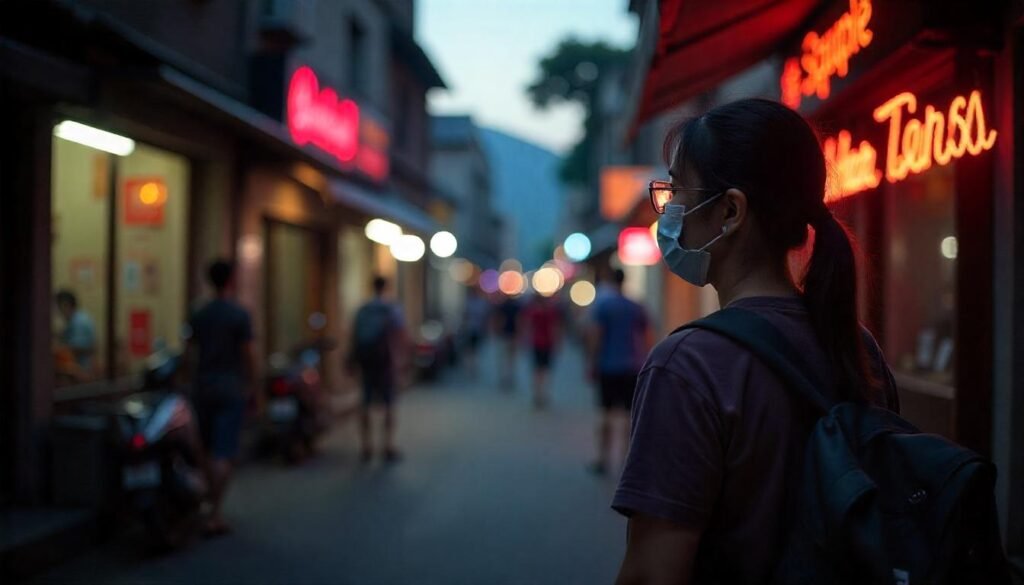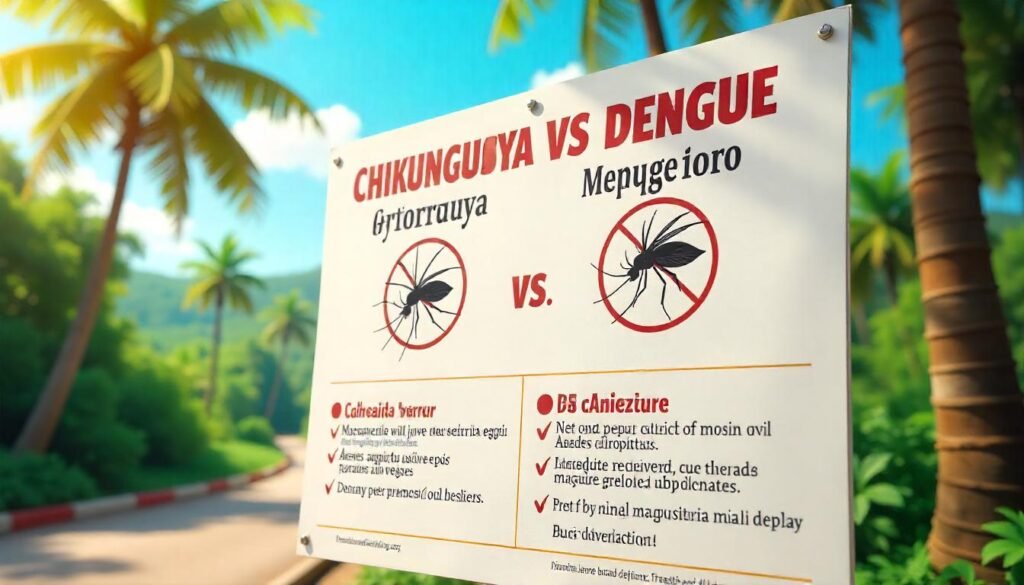That sudden, debilitating joint pain and high fever might be more than just a typical illness—it could be Chikungunya. If you or a loved one are experiencing these Chikungunya symptoms, you are in the right place.
This comprehensive guide will walk you through everything you need to know about the Chikungunya virus (CHIKV). We’ll cover its telltale symptoms, differentiate it from similar illnesses like Dengue , explore effective treatment and management strategies , and outline the most important prevention methods, all based on guidance from leading global health organizations like the World Health Organization (WHO) and the Centers for Disease Control (CDC).

Table of Contents
Chikungunya Symptoms
Chikungunya is a mosquito-borne illness caused by the Chikungunya virus. It is transmitted to humans through the bite of infected Aedes aegypti and Aedes albopictus mosquitoes —the same vectors responsible for Dengue and Zika. While rarely fatal, the symptoms can be severe and long-lasting.
The early symptoms of chikungunya typically appear 3-7 days after the mosquito bite. The most common indicators include:
- Abrupt High Fever: A fever of 102°F (39°C) or higher that appears suddenly.
- Severe Joint Pain (Arthralgia): This is the hallmark symptom. The pain is often excruciating and affects multiple joints, especially in the hands, wrists, ankles, and feet.
- Widespread Rash: A maculopapular rash (red skin with bumps) often appears on the torso and limbs. You can search for chikungunya rash pictures to see visual examples.
- Headache: A persistent and often intense headache.
- Muscle Pain (Myalgia): Generalized muscle aches and soreness.
- Fatigue: A feeling of extreme tiredness and lack of energy.
- Nausea and Vomiting: Some individuals may also experience digestive issues.

Chikungunya vs. Dengue: Understanding the Key Differences
Because they are spread by the same mosquito and share similar symptoms, it’s common to confuse Chikungunya and Dengue. However, there are key differences. The query “chikungunya vs dengue symptoms” is one of the most common searches for a reason.
| Feature | Chikungunya | Dengue |
| Primary Symptom | Severe, debilitating joint pain (arthralgia) is the most prominent feature. | High fever and severe headache are often more pronounced initially. Muscle pain (“breakbone fever”) is intense. |
| Rash | Rash appears in about 50% of cases. | Rash is more common and can take various forms. |
| Pain Location | Pain is intensely focused on the joints. | Pain is more widespread, with severe muscle and bone pain. |
| Long-term Effects | Chronic, lingering joint pain can last for months or years. | Severe cases can lead to hemorrhagic fever or shock, which are life-threatening. |
| Severity | Rarely life-threatening, but causes significant morbidity due to pain. | Can be life-threatening if it progresses to severe Dengue. |

Expert Note: If you have a fever and live in or have traveled to an area with mosquito activity, it is crucial to see a healthcare provider for an accurate diagnosis, which may involve a PCR test or serological tests.
Managing Chikungunya Treatment and Recovery
There is no specific antiviral medicine for chikungunya pain or the virus itself. Treatment focuses on relieving the symptoms. The fastest way to recover from Chikungunya involves a combination of medical support and at-home care.

Medical Treatment
- Pain and Fever Reducers: Over-the-counter medications like paracetamol (acetaminophen) are recommended to reduce fever and joint pain.
- Avoid NSAIDs (initially): It is often advised to avoid nonsteroidal anti-inflammatory drugs (NSAIDs) like ibuprofen and aspirin until Dengue has been ruled out, as they can increase the risk of bleeding complications associated with Dengue.
- Rest: Getting sufficient rest is extremely important, as it provides your body with the necessary time and energy to effectively combat the infection that it is fighting. Ensuring you have ample rest is critical in allowing your body’s natural defenses to work optimally and overcome the infection more efficiently.
What to Eat in Chikungunya Fever for a Faster Recovery
Proper nutrition and hydration are key to recovery. Focus on foods that help in recovery and keep you hydrated.
- Fluids: Maintaining proper hydration is essential, so be sure to drink plenty of water throughout the day. In addition to water, coconut water is an excellent choice for staying hydrated, as it contains electrolytes that can help replenish fluids. Furthermore, incorporating soups into your diet can also contribute to your hydration levels, as they are rich in water content and can provide additional nutrients.
- Vitamin C-Rich Foods: To support and strengthen your immune system, consider incorporating foods like oranges, kiwis, and leafy greens into your diet. These particular fruits and vegetables are known to have beneficial properties that can aid in maintaining a healthy immune response. Including a variety of these items can be a simple yet effective way to promote overall wellness and give your body an extra layer of defense.
- Easy-to-Digest Foods: Foods like porridge, cooked until soft and easily digestible, offer a soothing option for those seeking meals that are gentle on the stomach. Similarly, boiled vegetables, prepared without heavy seasoning or excessive fats, can provide essential nutrients while minimizing digestive discomfort. In addition, soups, especially those made with clear broths and easily digestible ingredients, are often well-tolerated and can be a comforting choice for individuals looking for foods that are mild and agreeable to the digestive system.
- Avoid: Oily foods, spicy foods, and processed foods are often triggers for inflammation in the body. These types of foods can contribute to inflammatory responses due to their composition and how the body processes them. Specifically, the high fat content in oily foods, the irritating compounds in spicy foods, and the artificial additives and preservatives commonly found in processed foods can all play a role in promoting inflammation.

The typical chikungunya recovery time for the acute phase is one to two weeks, but managing long-term symptoms is also crucial.
Prevention is Key: How to Protect Yourself and Your Family
Since there is no vaccine, the best strategy is prevention.
How to prevent chikungunya mosquito bites is a critical public health question.
- Use Mosquito Repellent: Apply an EPA-registered repellent containing DEET, picaridin, or oil of lemon eucalyptus on exposed skin.
- Wear Protective Clothing: To protect yourself from the elements and potential irritants, make sure to wear shirts that have long sleeves, fully covering your arms. In addition, it is advisable to wear long pants that extend down to your ankles, ensuring that your legs are also completely covered and shielded.
- Eliminate Standing Water: Mosquitoes are well-known for their ability to reproduce in environments where standing water is present. To effectively control mosquito populations and reduce the risk of mosquito-borne diseases, it is important to eliminate potential breeding grounds.
- One of the most effective methods to achieve this is by regularly emptying any containers or receptacles that can collect and hold water. This includes items such as flowerpots, which often accumulate water after watering plants or rainfall; buckets, which may be left outside and fill with rainwater; and discarded tires, which can trap water and provide an ideal breeding habitat for mosquitoes.
- In addition to emptying these items, it is also beneficial to clean them thoroughly. This removes any mosquito eggs or larvae that may be present, further disrupting the mosquito life cycle and preventing them from multiplying. By consistently implementing these simple measures, you can significantly reduce the number of mosquitoes in your surroundings and minimize the risk of being bitten.
- Use Mosquito Nets: Sleep under a mosquito net, especially during the day when Aedes mosquitoes are most active.
- Keep Mosquitoes Outside: Use screens on windows and doors and use air conditioning when possible.
Frequently Asked Questions About Chikungunya (PAA Section)
What is the main symptom of Chikungunya?
The main and most distinct symptom of Chikungunya is the abrupt onset of severe, often debilitating, pain in multiple joints. This joint pain (arthralgia) is frequently accompanied by a high fever.
How long does Chikungunya pain last?
The acute phase, including fever and severe joint pain, typically lasts for 1 to 2 weeks. However, for many people, the joint pain can become chronic and persist for months or even years.
Is Chikungunya contagious?
Chikungunya is not contagious from person to person. It is spread almost exclusively through the bite of an infected mosquito.
Can you get Chikungunya twice?
No, it is widely believed that once you recover from Chikungunya, you develop lifelong immunity to the virus and cannot be infected a second time.
Final Thoughts and When to See a Doctor
While most people recover fully from Chikungunya, its symptoms can severely impact your quality of life. Understanding how to recognize the symptoms, manage the pain, and, most importantly, prevent infection is your best defense.
If you suspect you have Chikungunya, especially if you are pregnant, elderly, or have other underlying health conditions, consult a healthcare professional immediately for a proper diagnosis and care plan.
Call-to-Action (CTA): If you found this guide helpful, please share it with your friends, family, and community to spread awareness. For more evidence-based health guides, subscribe to our newsletter!


